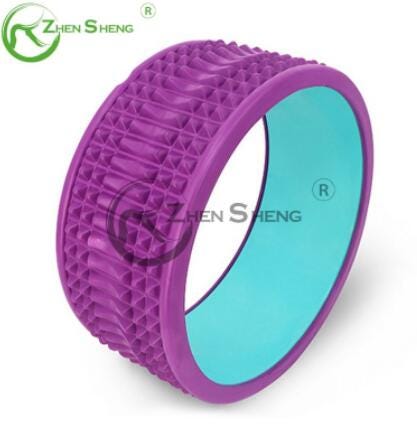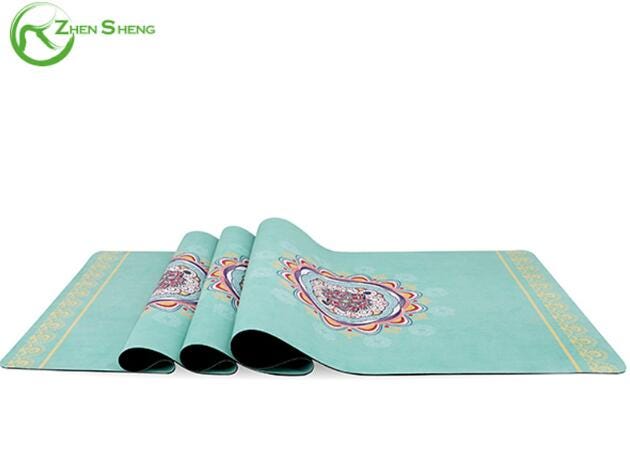What is the optimum thickness of a yoga mat? Did you know that the thickness of a mat does vary? Many people will just go to the shop and pick a mat that looks nice or order the coolest looking mat online. Others will try to find the cheapest mat when they first start practising. The problem is that many of these mats may look good or be cheaper, but they don’t necessarily provide the proper support you need for your yoga practice.
Now, the perfect mat may vary from person to person, but in general, some mats offer better support than others.

1. Type of practice — Depending on the type of yoga you practice, you can change the type of mat you are looking for. If you are going to be sitting on a mat for the majority of your class, for example if you are practising restorative or yin yoga, you may be looking for a thicker mat to prevent you from feeling the ground beneath your feet. If you are moving around more in class, some mats that are too thick may not have enough grip. These are just a few examples of how the type of class can change the mat you may be looking for.
2. Injuries — If you have any injuries that you are recovering from, you may be looking for a mat that is thicker to better cushion sore areas of your body. For example, if your knees get sore easily, you don’t want to put too much pressure on them. It won’t feel comfortable to have a hard surface on your knees. In this case, you will want a thicker mat to protect you from feeling the ground. As with any yoga practice, injuries should always be considered in advance to ensure the best practice for you. This is the same with your mat.
3. Home practice versus studio — The location of your practice is also a factor to consider. If you practice at home it will be easier to use a thicker mat that you can grab and unfold. However, when practising in the studio, more travel is required and the thicker the mat the heavier it tends to be. In this case, if you don’t want to carry a heavy mat around with you, you may want to look for a slightly thicker mat so that it will be lighter. Lighter mats are easier to carry around. There are plenty of travel mats out there, but you need to consider whether they will provide you with the right amount of support during class. You may not want the heaviest mat, but if you buy a mat that is too thin it can also bring complications.
4. Flooring material — Think about the floor you will be practising on. Do you practice at home? If so, what part of the house do you practice on? Do you practice on hardwood or on carpet? If you regularly practice in the same studio every time, think about their flooring. Is it hardwood? Is it made of matting? Is the floor you practice on hard or soft? This will have a huge impact on which type of mat you need. A harder, slipperier floor will need a thicker mat to protect the feel of the floor, as well as a mat with good grip so it doesn’t slip. If you have to constantly adjust your mat to prevent it from slipping, this will reduce practice.
Practising on carpet means you don’t need a very thick mat, but it is also more difficult to hold the mat in place. Carpeting can also cause the mat to slip. Know your floor and determine your needs from there.
The extra thickness of your yoga mat will help to cushion you and keep you from feeling the ground beneath your mat. In addition, thinner mats usually slide more and are harder to use in the long run. Thinner mats are usually not a good idea for people who practice regularly.
When looking for a mat, you will want to find one that is just the right thickness. Thicker mats will be gentler on the joints, especially in exercises where you spend a lot of time on the mat. For injuries, a thicker mat will help cushion the painful areas so you don’t put too much pressure on them. Also, the thicker the mat the better when you are lying down at the end of an exercise. Many classes end with a meditation where you lie on the mat, and you can imagine that lying on a thin mat for a long time will not be comfortable. You will be able to feel the floor under your feet, which is much more difficult for the joints.
This begs the question, can a yoga mat be too thick? The answer is actually yes. A yoga mat that is too thick can cause some unwanted problems. When your mat is too thick it can actually be more difficult to use. If the mat doesn’t grip well, too much padding can make it easier to slip and fall. This can affect your balance, which is essential for your yoga practice. This can have a negative impact on your practice and completely defeats the purpose of having a good quality yoga mat.
In addition, an extra thick mat can be more difficult to spread. Imagine going to class and laying out your mat, only to have the edges keep curling up. This could be due to the thickness and material of the mat. Some materials are so fixed in shape that the mat will never unroll just right. It would be frustrating to have to constantly unroll the edges of the mat and try to flatten them at the beginning of each session. This problem can also be caused by the material of the mat.
A mat that is too thin can stiffen the joints, especially for those who are injured. Your ankles, knees, wrists and elbows are sure to feel the difference if the mat is too thin. Many classes take place in studios with hard floors and if your mat is so thin that you can feel the floor beneath you, this can negatively affect your practice and make your body sore. Many thin mats also tend to slide on hardwood floors and do not have a strong grip. Grip strength is very important in yoga classes to help maintain balance and stability. If you are sliding and adjusting your mat throughout your practice, this can make your class less enjoyable.
Imagine class and posing on your hands and knees. The thin mat will put pressure on your knees and wrists. Think about how uncomfortable it will be every time you pose on the mat and how much pressure will be put on your joints. This will certainly relax you from the practice and allow you to focus on the discomfort.

So, knowing that a mat can be too thick or too thin, is there a specific optimum thickness? We personally recommend a mat of around 6.6 mm. This gives the mat just the right amount of cushioning without losing grip. For people who regularly stand and sit on their mats for yoga practice, this is likely to be the optimum thickness for the mat. Anything thinner will hurt the joints and anything thicker will not only make balance difficult, especially for beginners, but will put extra strain on your ankles as you try to find stability.
Customised yoga mat manufacturers tell you that this is why it is important to know the composition of your mat before you buy it. Many people will only go for the coolest looking or cheapest mat they can find. The problem is that many of these mats are designed to look good or be as cheap as possible, but they may not provide the support needed for a good, safe yoga class. The purpose of a yoga mat is to help you practice, not to make it harder. If you choose the first mat you see, you may choose a mat that doesn’t actually suit your needs or help you practice the way you should.
Copyright:@2020-2021
Comments Please sign in or sign up to post.
0
0 of 500 characters used